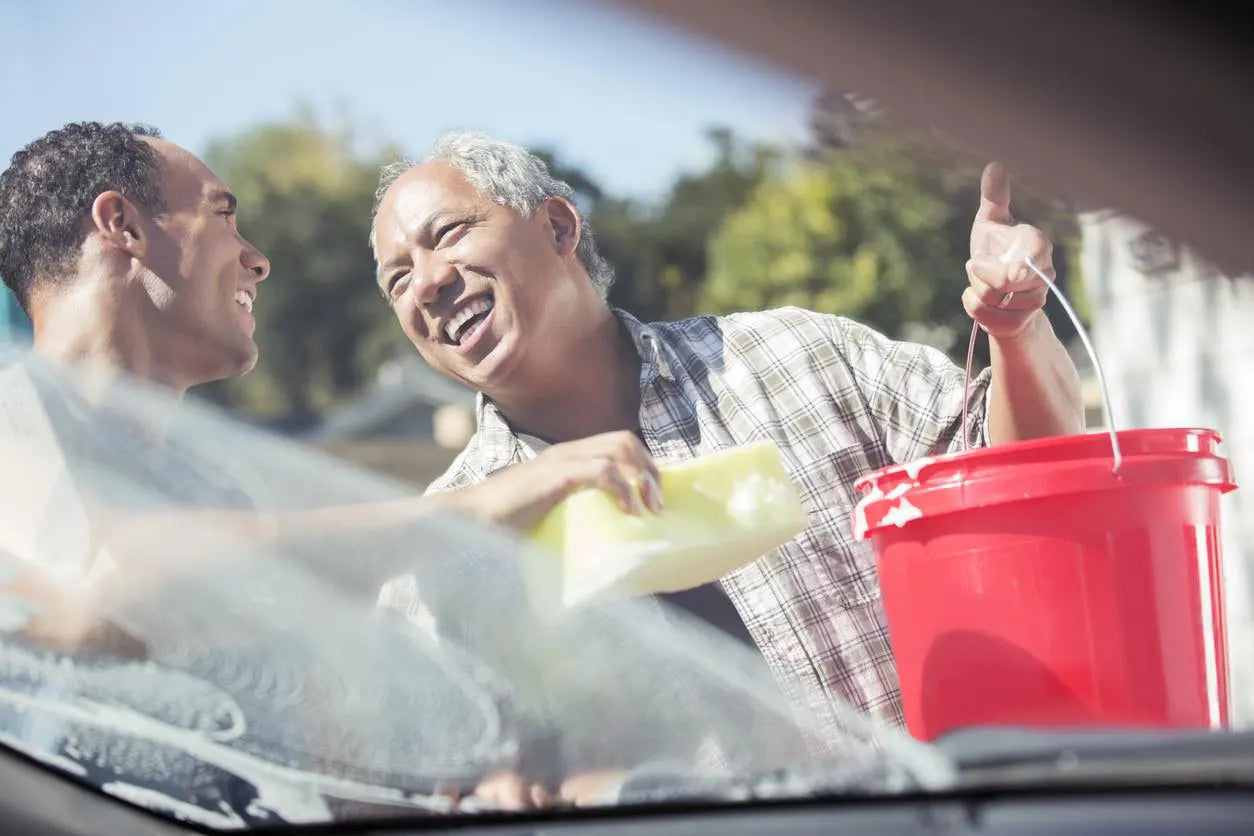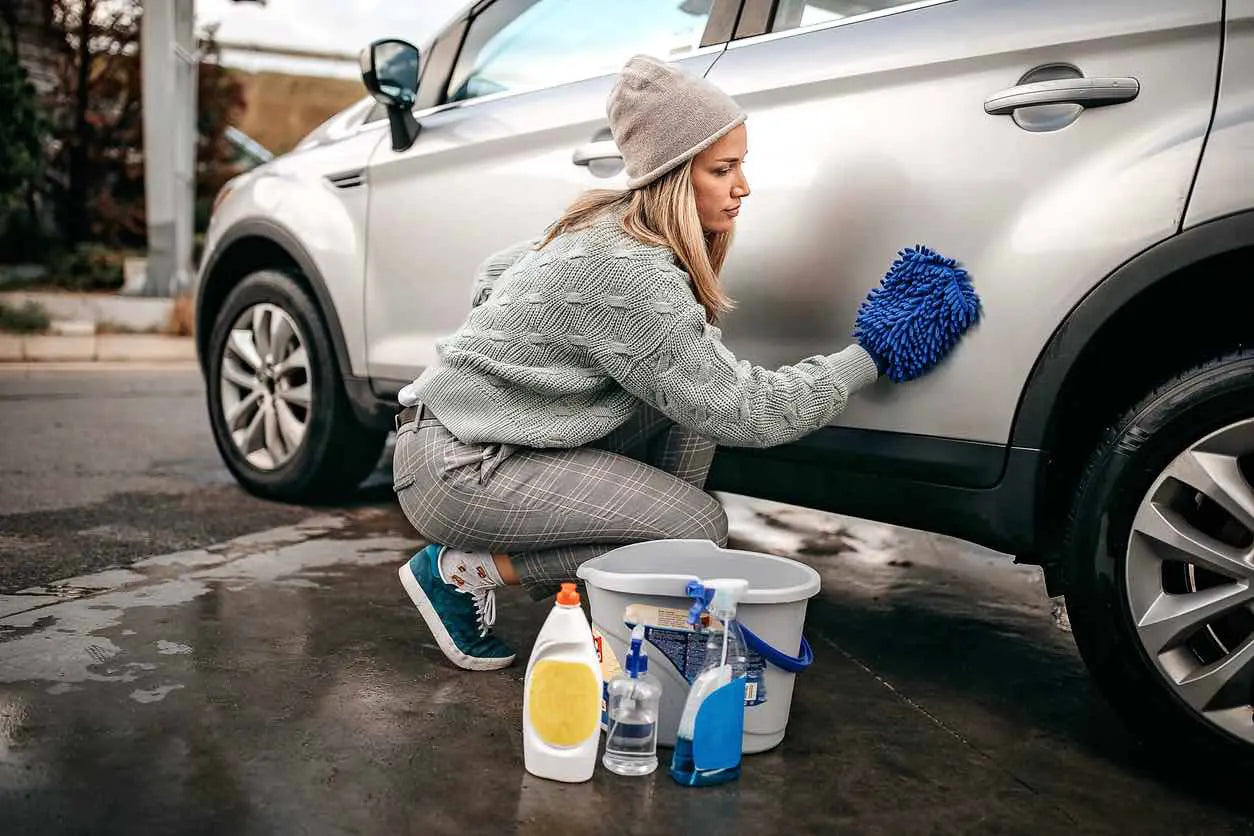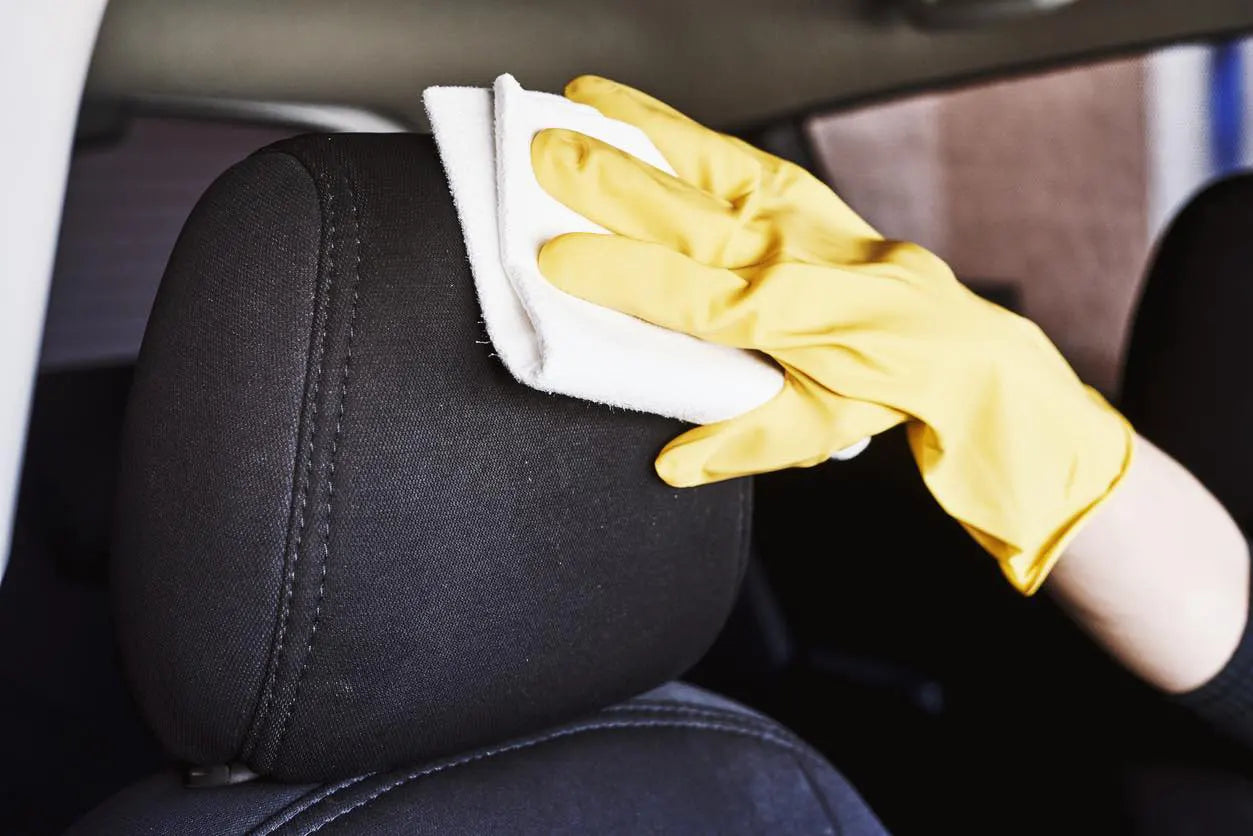Cleaning Your Car's Exterior
Have you been neglecting to give the exterior of your car some much-needed TLC?
Not only does your car look its best when it’s been properly cleaned, but regular exterior washing plays a vital role in the overall maintenance of your vehicle.
From taking care of your paintwork to remembering to let the car cool off before cleaning, you’ll be ready to get your car looking squeaky clean after reading our handy guide to exterior car cleaning.
Exterior Cleaning Tips

Choose the Right Weather and Time
You might be tempted to wash your car in sunny and hot weather, but cloudy, less-warm days are best. This is because in between steps, the sun will dry your car before you’ve even had a chance to rinse or dry it, leaving pesky watermarks on your paintwork.
It’s also worth bearing in mind that heat can reduce the effectiveness and ease of use of some cleaning products. In particular, car wax can set hard very quickly in warm weather, so you’ll need to work fast, panel by panel, to avoid this and get the best results.
If you can’t avoid cleaning on a hot day, try to do it early in the morning or in the evening, and keep your car in the shade as best as you can to achieve that coveted showroom shine.
Cleaning Tools and Advice
Starting with products, for even the most basic washing, you’ll need a sponge, a bucket and car shampoo. If you want to go the extra mile, then you can invest in things like a pressure washer, wax, and polish. The products you use and the number of steps you add to your car wash regime are entirely up to you.
Once you have your products, it’s worth thinking about how often you want to clean your car. Weekly washes are recommended, but that might seem like a lot for most people. Either way, just make sure you’re giving it a good clean as often as you can. Leaving dirt on your car when you know it’s there might seem harmless, but it can cause damage and contribute to premature wear and tear.
Shampooing Your Car
Investing in a good quality car shampoo that won’t do any damage is definitely worth it. Just make sure you never use anything abrasive like washing up liquid that can damage your paintwork.
Mix your shampoo with warm water, and gently hand wash your car using a sponge to remove stubborn dirt that wouldn’t budge after the initial rinse. Dip your sponge regularly to prevent contamination and consider using a second bucket; this will help stop dirt getting back on your paintwork.
Drying Your Car
Drying your car is important – you don’t want to waste all that time for there to be streaks and watermarks all over your bodywork.
A high-quality cloth like our Chamois Cloth is the perfect way to get your car looking spotless. Soft and absorbent, chamois cloths are perfect for drying the paintwork after rinsing – helping you retain that just-washed shine for longer.
Cleaning the Windscreen, Exterior Windows, and Wing-Mirrors
Regular window cleaner (that’s ammonia free) and a microfibre cloth is the best way to get your windows, windscreen, and wing-mirrors streak-free and most importantly, clean. You can also make your own window cleaner by mixing one-part distilled vinegar with ten-parts water.
Both solutions will make light work of streaks, dirt and grime that were hampering your visibility at the wheel. For tougher deposits like bird droppings and tree sap, however, we’d recommend using a high-quality commercial glass cleaner that’s specifically designed for use on car windows and windscreens.
How to Clean Car Wheels
Cleaning Your Alloys
Owing to their shape and the tough deposits – like brake dust and road salt – that they come into contact with, alloy wheels can be hard to keep clean. Following a good rinse with a pressure washer, use an alloy brush and a dedicated cleaner to remove brake dust residue and other contaminants that can easily stain the surface of your car’s alloys.
Brake dust tends to cling to alloys and builds up faster than dirt on any other part of your car. So, unless you want to constantly be battling against the dirt, the best thing to do is prevent it from building up in the first place with a layer of wax – usually as often as you wax the rest of your car.
Tyre Care
Last but not least, looking after your tyres will give your exterior clean the perfect finishing touch, making it look as good as new.
Using tyre shine spray and tyre trim restorer will improve the look of the rubber, reversing the effects of sun fading and restoring that wet-look black appearance. This final step shouldn’t be skipped if you want your car to look its absolute best.
Looking After Your Car’s Paintwork
Knowing What Damages Your Paintwork
Although it’s supposedly lucky to get hit by bird droppings, if they end up landing on your car, they can cause damage. All types of animal droppings are corrosive, and the longer they’re left, the more of a problem they become.
Dead insect splatters and tree sap also have a corrosive effect on the paintwork, damaging the surface over time. Looking out for any of these and remembering to wash them away as soon as possible will do wonders for keeping your paint job intact and looking its best for longer.
Polishing Your Car
Once you’ve fully shampooed and dried your car, you can polish the paintwork. You can do this easily with some car polish and a cloth – the old-fashioned way is the best way to make your car shine.
Car polish is designed to remove light scratches, swirl marks and other minor imperfections from the surface of the paintwork. It has a light abrasive quality that gently removes surface-level marks, so you can make sure your paintwork is in the best possible condition before moving on to the next step…
Waxing Your Car
Next, comes the wax.
This is an essential part of protecting your paintwork since it seals the top layer of paint. As a rule of thumb, if rainwater can form droplets and run off your car paint normally, then you’re not in desperate need of a fresh coat of wax.
Treating your car with wax twice a year will protect your paintwork from external influences like dead bugs, tree sap and bird droppings, as well as light scratches and corrosion. It’s recommended that you apply a fresh layer once during spring and again before winter to ensure maximum protection and shine all year round.
This guide should’ve equipped you with the know-how needed to get your exterior shining, but our helpful tips don’t stop here. If you’re looking for more actionable advice, be sure to check out our hub of car cleaning tips and hints – whether it’s vacuuming, seats, dashboards or figuring out what products you should use, we’ve got you covered.
-

Car Cleaning Products
Browse ProductsFrom specialist cleaning wipes to our helpful handheld vacuum cleaner, Vipa Car Parts stocks a range of products to make cleaning a cinch.
-

Car Cleaning Guide
Find Out MoreOur thorough how-to guides help to make light work of all kinds of car cleaning jobs. Whatever the task, our one-stop hub will get your car looking and feeling its best in no time.
-

Cleaning Your Car’s Interior
Find Out MoreA build-up of rubbish, dirty and stains can take the fun out of driving. Take on the task of refreshing your car interior with our helpful tips.




